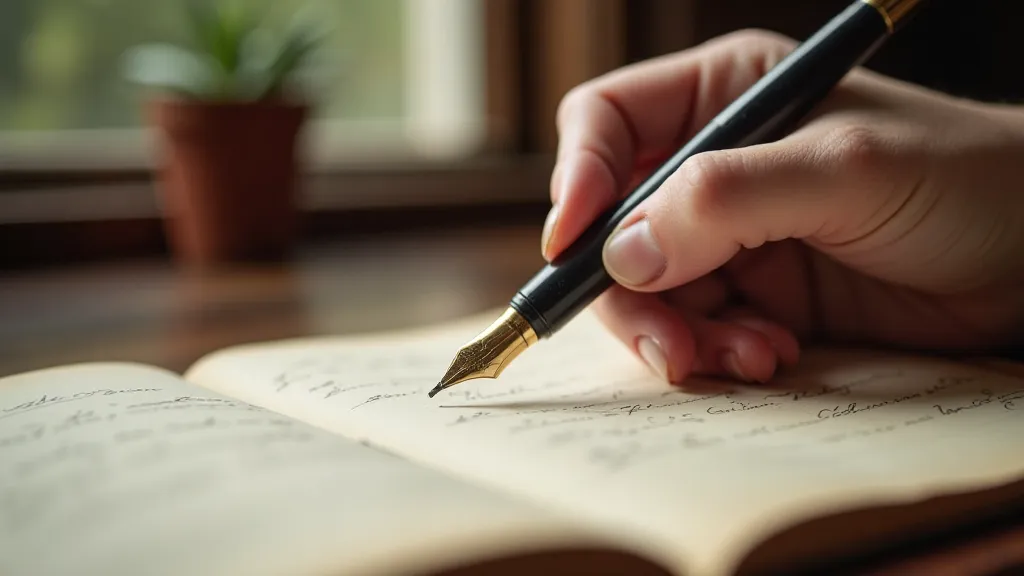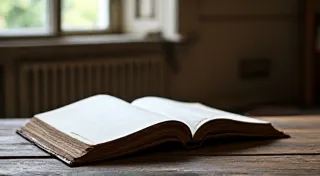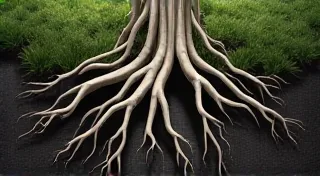The Inkwell's Echo: How Vintage Pens Shape Modern Writing Styles
There's a quiet magic to holding a vintage pen. It’s not just the smooth heft of ebonite or the shimmer of celluloid; it’s a connection to a lineage of craftsmanship, a palpable sense of history whispering through the nib. We’re so often consumed by the fleeting nature of the digital age, with its rapid-fire communication and ephemeral content. But holding a pen crafted perhaps a century ago, a pen that has likely witnessed countless stories unfold across its pages, offers a grounding experience. It subtly, yet profoundly, alters the act of writing itself.
My grandfather, a retired English professor, instilled in me this reverence for the written word and the tools that shape it. He had a small collection of fountain pens, carefully stored in a velvet-lined box. As a child, I’m not sure I fully appreciated them, seeing them merely as beautiful, unusual objects. But he’s always said something that stuck with me: "A pen isn't just a tool, it's an extension of your thoughts, a conduit for your creativity." He would carefully demonstrate the nuanced feel of each pen – the slight flex of a nib, the comfortable weight in the hand – and explain how those characteristics could influence the flow of his writing.
The Weight of History, the Feel of the Nib
Modern pens, while often exceptionally well-made, are frequently designed for consistency and ease of mass production. Vintage pens, on the other hand, are often the result of a craftsman's dedicated artistry. Each one is a reflection of the era in which it was made. The materials alone speak volumes. Early celluloid, with its characteristic swirls and patterns, tells a story of nascent plastics technology. Ebonite, a hard rubber, offers a satisfying grip and a tactile richness that is absent in many modern materials. The pens of the 1920s and 1930s, for example, frequently featured generous filling mechanisms and ornate designs, a direct reflection of the Art Deco aesthetic prevalent at the time.
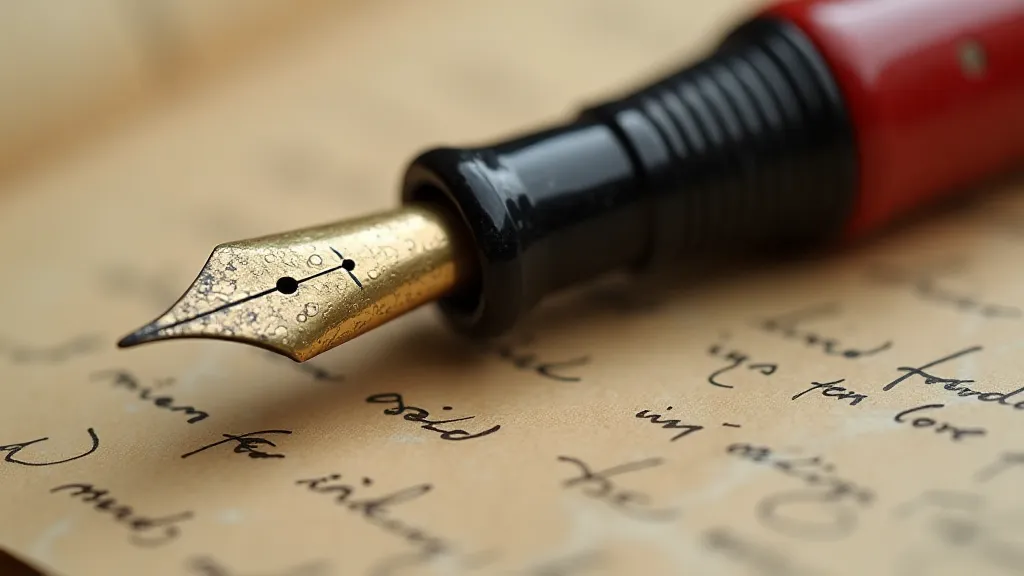
But it’s not just the materials; it’s the feel of the nib that truly shapes the writing experience. Modern nibs are often ground for optimal ink flow and minimal feedback, aiming for a consistently smooth glide. Vintage nibs, however, were often ground with a greater variety of characteristics. Some offered a noticeable flex, allowing the writer to vary line width with pressure—a signature flourish that adds a unique personality to handwriting. Others were “stiff” or “firm,” providing a more controlled and precise writing experience. This variation isn’t simply a matter of preference; it’s a testament to the evolving standards and approaches to pen design. A well-restored vintage pen can reignite a lost passion for writing, a journey explored in detail in The Ink's Epilogue: How a Restored Pen Can Re-Ignite a Lost Passion.
The Aesthetics of Vintage Ink
The relationship extends beyond the physical feel to the aesthetic quality of the writing itself. A writer using a flexible nib might naturally adopt a more expressive style, letting the pen dictate the rhythm and flow of their words. The slight variations in line width can add a dynamic energy to the handwriting, reflecting the writer’s emotions and intentions. The deliberate slowing down that often accompanies using a fountain pen – the conscious choice to dip the nib and regulate the ink flow – encourages a more thoughtful and deliberate writing process. This is in stark contrast to the rapid, often careless, typing that dominates much of our modern communication. The act of creating with ink carries with it echoes of the past, almost as if mapping lost territories of creativity – an idea beautifully expanded upon in The Cartographer's Sigh: Mapping Lost Territories of Creativity.
Consider the works of writers like Ernest Hemingway, known for his concise and direct prose. While we can't definitively say he used a particular vintage pen, it’s highly probable that his writing was influenced by the pens available to him at the time—pens that likely demanded a more deliberate and controlled writing style. The emphasis on clarity and precision in his writing could be partially attributed to the tools he used. The interplay between the tools we use and the memories they evoke is akin to an alchemical residue—an intriguing exploration detailed in Chromaturgical Residue: The Alchemy of Ink and Memory.
Collecting & Restoration: A Connection to the Past
For those drawn to vintage pens, collecting isn's merely about acquiring objects; it’s about preserving a piece of history and connecting with the craftsmanship of a bygone era. The hunt for a rare or well-preserved pen can be an adventure in itself, uncovering forgotten stories and appreciating the skill of the original maker. And for many, the satisfaction lies not just in owning a vintage pen, but in restoring it—bringing it back to life, repairing a cracked barrel, or re-tuning a neglected nib.
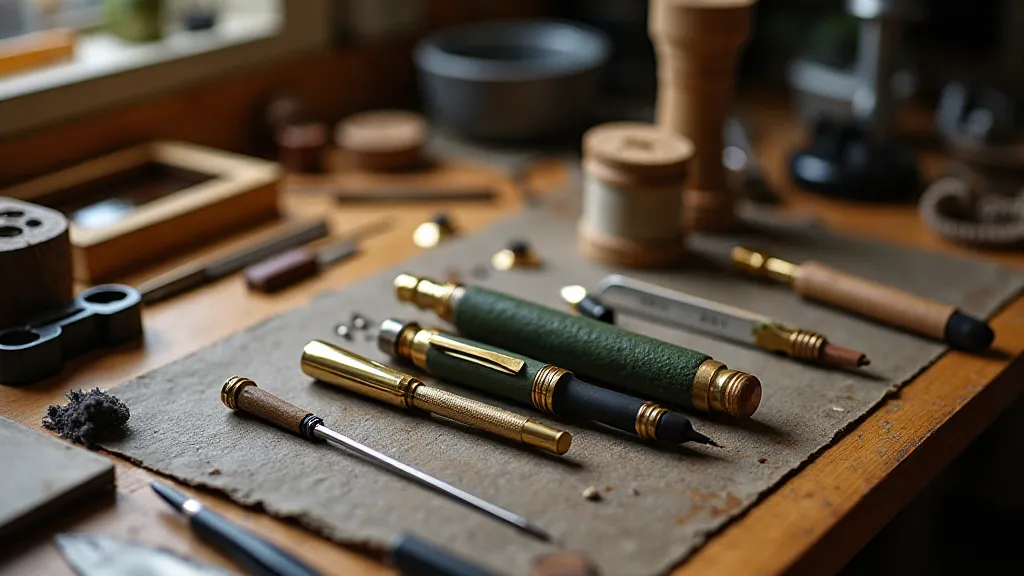
The process of pen restoration requires patience, skill, and a deep appreciation for the original design. It's an act of preservation, ensuring that these beautiful and functional objects continue to inspire generations to come. It's also a chance to learn about the mechanics and artistry involved in pen manufacturing, gaining a deeper understanding of the craftsmanship that went into each individual piece. The quiet lament of a damaged nib and the subsequent restoration process, truly echoes the past. Further exploring this idea, you might find solace in The Inkwell's Lament: How History Whispers Through a Cracked Nib.
Beyond Function: The Psychological Impact
Perhaps the most subtle, yet profound, influence of vintage pens lies in the psychological realm. Holding a pen that has weathered decades, a pen that has potentially been used to create meaningful works, imparts a sense of continuity and connection. It reminds us that we are part of a larger narrative, a lineage of writers and thinkers who have used similar tools to express their ideas and shape the world around them.
In a world increasingly dominated by ephemeral digital content, the tactile experience of using a vintage pen offers a grounding sense of permanence and value. It’s a reminder to slow down, to appreciate the beauty of craftsmanship, and to connect with the rich history of the written word. It encourages a more thoughtful and deliberate approach to writing, fostering creativity and enhancing the overall aesthetic of one’s work. It’s more than just a pen; it’s an echo of the past, shaping the present, and inspiring the future. Consider the implications of using a writing tool that carries with it a weight of history—a burden and a privilege to create something that endures. This inherent connection to the past extends to the very ink itself, a precious resource often imbued with significance.
The appreciation for vintage pens often goes beyond mere aesthetics. It's a recognition of the human touch, the imperfections, and the stories embedded within each object. These pens are tangible links to a time when craftsmanship was paramount, and objects were made to last. They represent a rebellion against the disposability and uniformity that characterize much of modern consumer culture. They are a reminder that beauty can be found in imperfection and that true value lies not in novelty but in longevity.
Moreover, the act of using a vintage pen can be a form of mindfulness. The deliberate movements, the careful attention to detail, and the heightened sensory awareness all contribute to a more meditative writing experience. It is a respite from the constant distractions and demands of the digital world.
Imagine the conversations a vintage pen has witnessed, the secrets it has kept, the stories it has helped to create. It is a silent observer of human history, a participant in countless moments of joy, sorrow, triumph, and despair. To hold such a pen is to connect with that history, to become a part of that ongoing narrative.
Furthermore, the pursuit of vintage pens can be a rewarding hobby in itself. The thrill of the hunt, the satisfaction of restoration, and the camaraderie of fellow collectors all contribute to a sense of purpose and belonging. It is a community of passionate individuals who share a deep appreciation for the beauty and history of these remarkable objects.
